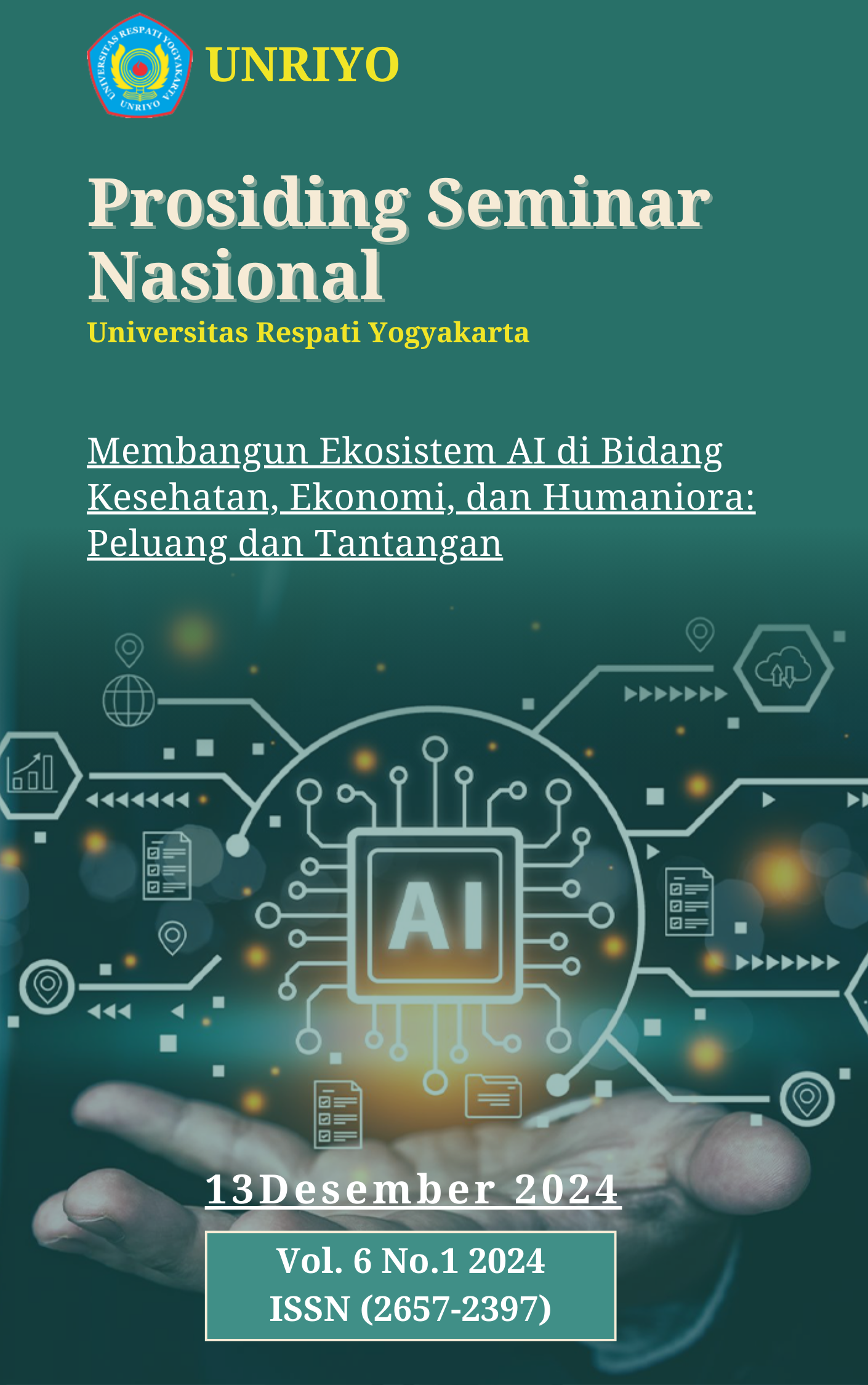Analisis Sentimen Pada ChatGPT Menggunakan Algoritma Long Short Term Memory (LSTM)
Keywords:
Sentimen Analisis, Analisis ChatGPT, Metode LSTMAbstract
Penelitian ini fokus pada analisis sentimen menggunakan ChatGPT dengan memanfaatkan metode LSTM dan memanfaatkan dataset dari Kaggle. Tujuan utama dari penelitian ini adalah untuk meningkatkan kinerja analisis sentimen teks dengan mengadopsi model LSTM yang lebih canggih dibandingkan dengan model berbasis aturan yang umumnya digunakan. Metode LSTM dipilih sebagai pendekatan untuk menganalisis sentimen pada dataset teks yang telah diolah dan diberi label sentimen. Tahapan penelitian dimulai dengan proses pengumpulan dan persiapan data, diikuti dengan pembuatan model rule-based. Selanjutnya, dilakukan pemrosesan dan pre-training metode LSTM, featurization, training metode LSTM, evaluasi model, dan analisis hasil. Pada tahap evaluasi, kinerja Metode LSTM akan dinilai menggunakan metrik evaluasi seperti akurasi, presisi, recall, dan F1-score. Hasil evaluasi akan dibandingkan dengan model rule-based yang telah dibuat sebelumnya. Harapannya, hasil dari penelitian ini dapat memberikan wawasan baru terkait penggunaan Metode LSTM dalam analisis sentimen teks, sekaligus meningkatkan kinerja sentimen analisis secara keseluruhan.
Downloads
References
Ahmed, S. A., MonaLisa, Hussain, M., & Khan, Z. U. (2022). Supervised machine learning for predicting shear sonic log (DTS) and volumes of petrophysical and elastic attributes, Kadanwari Gas Field, Pakistan. Frontiers in Earth Science, 10. https://www.frontiersin.org/articles/10.3389/feart.2022.919130
Alomari, E., Katib, I., Albeshri, A., & Mehmood, R. (2021). COVID-19: Detecting Government Pandemic Measures and Public Concerns from Twitter Arabic Data Using Distributed Machine Learning. International Journal of Environmental Research and Public Health, 18(1). https://doi.org/10.3390/ijerph18010282
Borgman, J., Stark, K., Carson, J., & Hauser, L. (2022). Deep Learning Encoding for Rapid Sequence Identification on Microbiome Data. Frontiers in Bioinformatics, 2. https://www.frontiersin.org/articles/10.3389/fbinf.2022.871256
Ganesh, P., Chen, Y., Lou, X., Khan, M. A., Yang, Y., Sajjad, H., Nakov, P., Chen, D., & Winslett, M. (2021). Compressing Large-Scale Transformer-Based Models: A Case Study on BERT. Transactions of the Association for Computational Linguistics, 9, 1061–1080. https://doi.org/10.1162/tacl_a_00413
Hertina, H., Nurwahid, M., Haswir, H., Sayuti, H., Darwis, A., Rahman, M., Yendra, R., & Hamzah, M. L. (2021). Data mining applied about polygamy using sentiment analysis on Twitters in Indonesian perception. Bulletin of Electrical Engineering and Informatics, 10(4), 2231–2236. https://doi.org/10.11591/eei.v10i4.2325
J. Zheng & L. Zheng. (2019). A Hybrid Bidirectional Recurrent Convolutional Neural Network Attention-Based Model for Text Classification. IEEE Access, 7, 106673–106685. https://doi.org/10.1109/ACCESS.2019.2932619
Kim, A. Y., Ha, J. G., Choi, H., & Moon, H. (2018). Automated Text Analysis Based on Skip- Gram Model for Food Evaluation in Predicting Consumer Acceptance. Computational Intelligence and Neuroscience, 2018, 9293437. https://doi.org/10.1155/2018/9293437
Kulkarni, A., Sthapit, A., Sedhain, A., Bhattarai, B., & Panthee, S. (2021). Texture Classification using Angular and Radial Bins in Transformed Domain. International Journal of Advanced Computer Science and Applications, 12(3). https://doi.org/10.14569/IJACSA.2021.0120301
Mudinas, A., Zhang, D., & Levene, M. (2018). Bootstrap Domain-Specific Sentiment Classifiers from Unlabeled Corpora. Transactions of the Association for Computational Linguistics, 6, 269–285. https://doi.org/10.1162/tacl_a_00020
Picozzi, M., & Iaccarino, A. G. (2021). Forecasting the Preparatory Phase of Induced Earthquakes by Recurrent Neural Network. Forecasting, 3(1), 17–36 https://doi.org/10.3390/forecast3010002
Pilař, L., Kvasničková Stanislavská, L., & Kvasnička, R. (2021). Healthy Food on the Twitter Social Network: Vegan, Homemade, and Organic Food. International Journal of Environmental Research and Public Health, 18(7). https://doi.org/10.3390/ijerph18073815
Preto, A. J., Matos-Filipe, P., Mourão, J., & Moreira, I. S. (2022). SYNPRED: prediction of drug combination effects in cancer using different synergy metrics and ensemble learning. GigaScience, 11, giac087. https://doi.org/10.1093/gigascience/giac087
Shafique, M. A., & Marchán, S. S. (2022). Investigating the Impact of Information Sharing in Human Activity Recognition. Sensors, 22(6). https://doi.org/10.3390/s22062280
W. Li & B. Xu. (2020). Aspect-Based Fashion Recommendation With Attention Mechanism. IEEE Access, 8, 141814–141823. https://doi.org/10.1109/ACCESS.2020.3013639
Wang, Z., & Wu, Q. (2018). An Integrated Deep Generative Model for Text Classification and Generation. Mathematical Problems in Engineering, 2018, 7529286. https://doi.org/10.1155/2018/7529286
Wei, L., Song, Y., He, W., Chen, X., Ma, B., Lu, Y., & Zhu, X. (2020). Accuracy Improvement of IOL Power Prediction for Highly Myopic Eyes With an XGBoost Machine Learning-Based Calculator. Frontiers in Medicine, 7. https://www.frontiersin.org/articles/10.3389/fmed.2020.592663


